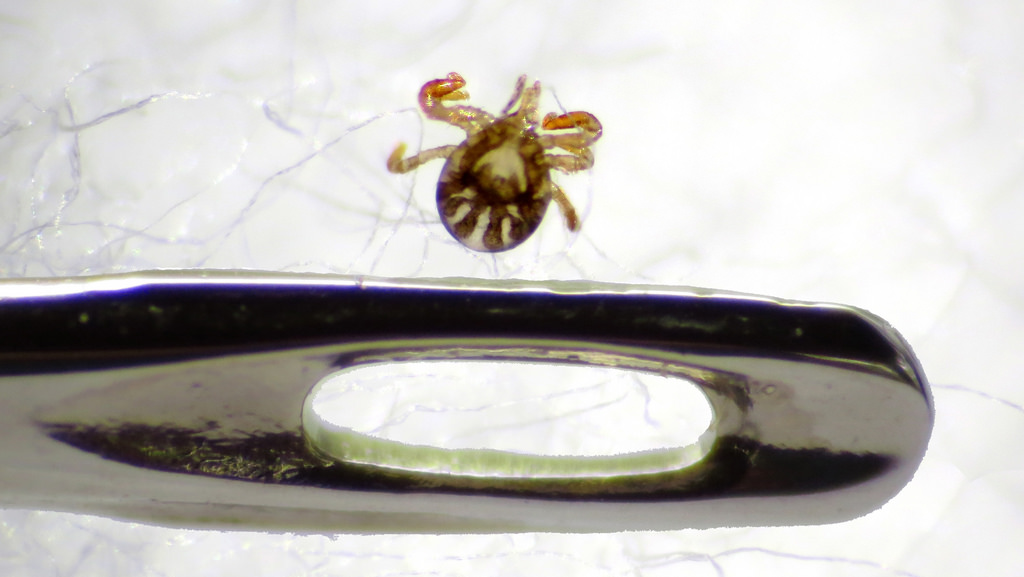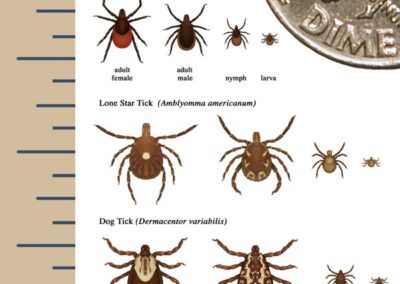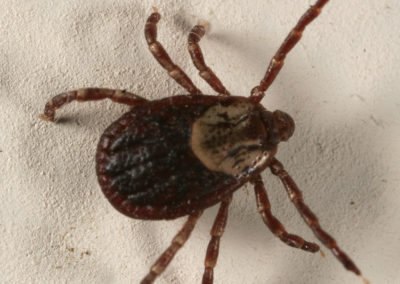Ticks in Maryland
They’re small, slow-moving and well-camouflaged, but their bites can pack a devastating punch. They’re ticks, and they’re to blame for 10 major diseases across the United States, including anaplasmosis, ehrlichiosis, Rocky Mountain spotted fever, tularemia, tick paralysis and the most debilitating of all tick-borne diseases: Lyme disease. Dog and deer ticks are both abundant in Maryland so it’s important to know some basic information about these pests.
The Tick: A Closer Look
Ticks pass through four distinct phases: egg, larva, nymph and adult. From the moment a tick hatches it relies on blood as its food source. Here in Maryland, ticks are most active in spring and summer, but they’re hearty and can easily survive sub-freezing temperatures. You can expect to encounter ticks in areas full of unkept tall grasses, shrubs and tree bark.
How do ticks get inside your home? They don’t fly or jump. Instead, they sit in wait on a blade of grass or a leaf with their front legs sticking out in a process called “questing.” Like Velcro, they easily stick to any person or pet unfortunate enough to cross their path. Once they’ve found a host, they climb up, latch on and quite literally begin bloodsucking.
Tick Myths
Lymes Disease
Despite popular belief, if you’re bitten by a tick, you won’t feel pain and you won’t automatically contract a disease if the tick is carrying one. Disease-causing bacteria like Borrelia burgdorferi (responsible for Lyme disease) live in ticks’ stomachs. If a tick is biting you, it takes about 24 hours for the bacteria to get into its saliva and, ultimately, into your bloodstream.
Powassan Virus
Until a few decades ago, the powassan virus was only transmitted by a tick species that does not commonly bite humans and human cases were extremely rare. Due to the changes in ecology, the possawan virus has been detected in deer ticks and a few human cases have been reported. Unlike Lyme disease, infection with Powassan virus can occur within minutes after a tick attaches to the skin and all tick stages (larva, nymph and adult) are capable of transmitting the infection.
Powassan has spread because the range of deer ticks across the US has spread as well. Because deer ticks can now transmit Powassan virus infection to humans, some cases are showing up in areas where they have never been before. According to the CDC, there have been no reported cases of Powassan in Maryland (link: http://www.cdc.gov/powassan/statistics.html)
But let’s not dwell on contracting tick-borne diseases. Let’s discuss how to prevent contracting them.
Have You Seen Ticks in or Around Your Home?
The life cycle of a tick invasion varies depending on tick species. Some ticks are able to live as long as three years if they have ready access to hosts (food sources). The more hospitable the environment is for ticks (i.i. plentiful access to hosts and lack of measures to get rid of the pests) the longer a tick invasion will last.
If you see a tick attached to you, a family member’s or pet’s skin, remove it immediately to reduce the odds of becoming ill. Grasp it as close to your skin as possible with tweezers, and pull straight up so its mouth doesn’t twist off and remain lodged in the skin. Clean the skin with alcohol and dispose of the bug. If you see any ticks in or near your home, act quickly to have your home treated to reduce the risk of you and your loved ones contracting a tick-borne illness. Tick bites that develop rashes in the surrounding skin could indicate that you’ve contracted a disease, and should be checked out by a doctor right away.
For the sake of your safety and your loved ones’ safety, don’t ignore tick warning signs and don’t try to eradicate this dangerous pest yourself. At Eco-Care, we’ve got science on our side. We’ve studied insects for decades, and know how to safely control them around peoples’ homes. Our training in entomology is precisely what sets our service apart from the rest. If ticks are bugging you, call us right away!
Personal Protection Tips Recommended by the CDC
- Remove leaf litter.
- Clear tall grasses and brush around homes and at the edge of lawns.
- Place a 3-ft wide barrier of wood chips or gravel between lawns and wooded areas to restrict tick migration into recreational areas.
- Mow the lawn frequently.
- Stack wood neatly and in a dry area (discourages rodents).
- Keep playground equipment, decks, and patios away from yard edges and trees.
- Discourage unwelcome animals (such as deer, raccoons, and stray dogs) from entering your yard by constructing fences.
- Remove old furniture, mattresses, or trash from the yard that may give ticks a place to hide.
Tick Lifecycle image courtesy of the University of Maryland Department of Agriculture.





